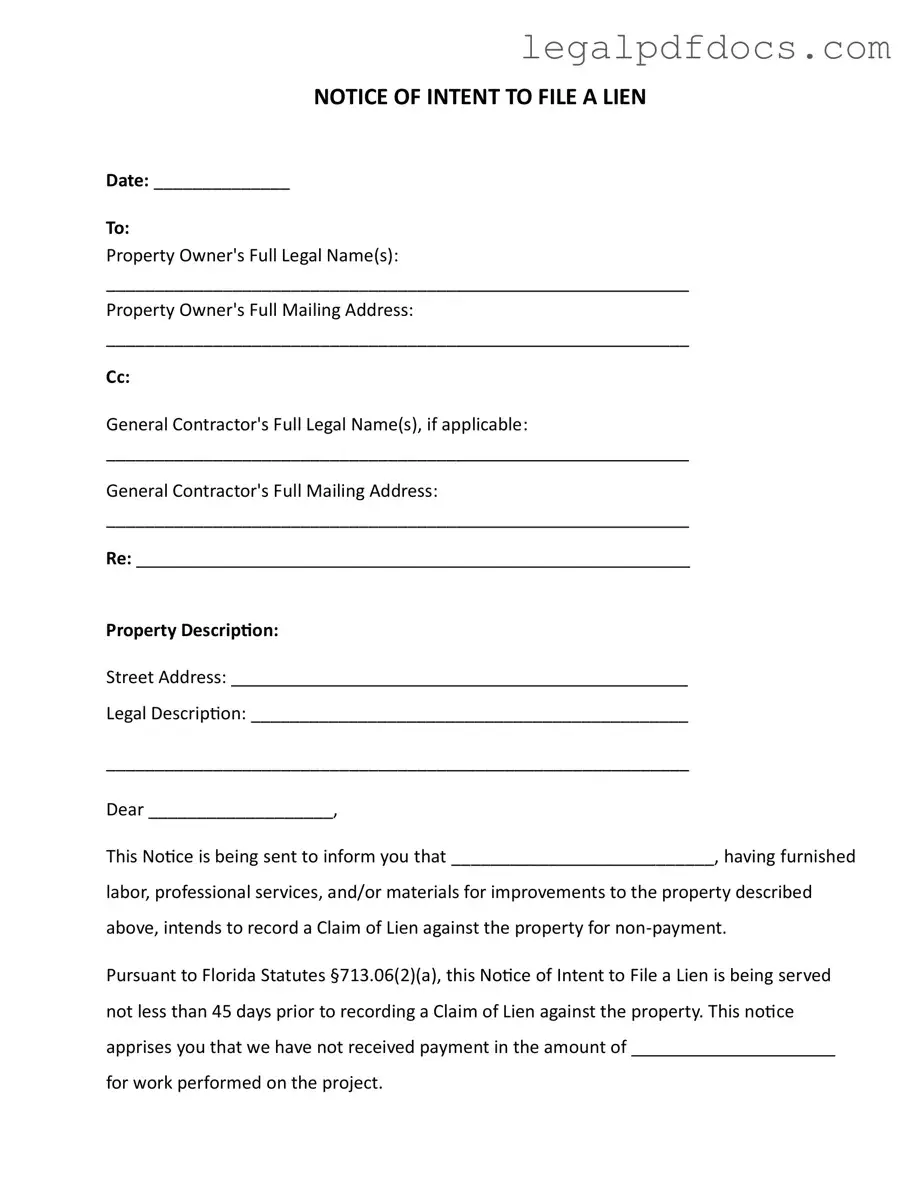The Intent to Lien Florida form serves as a critical communication tool for contractors, suppliers, and service providers who have not received payment for their work on a property. This form is an official notice that alerts property owners about an impending claim of lien, which can be a serious matter. It includes essential information such as the date of the notice, the names and addresses of the property owner and general contractor, and a detailed description of the property in question. The notice clearly states the amount owed for the services or materials provided, emphasizing the importance of timely payment. According to Florida law, this notice must be sent at least 45 days before filing a lien, giving property owners a chance to address any payment issues. If payment is not made or a satisfactory response is not received within 30 days, the contractor may proceed to record a lien, potentially leading to foreclosure proceedings and additional costs for the property owner. This form also includes a certificate of service, ensuring that the notice has been properly delivered, which adds another layer of accountability to the process. Understanding the Intent to Lien form is essential for both property owners and contractors, as it outlines rights and responsibilities that can significantly impact their financial and legal standing.
